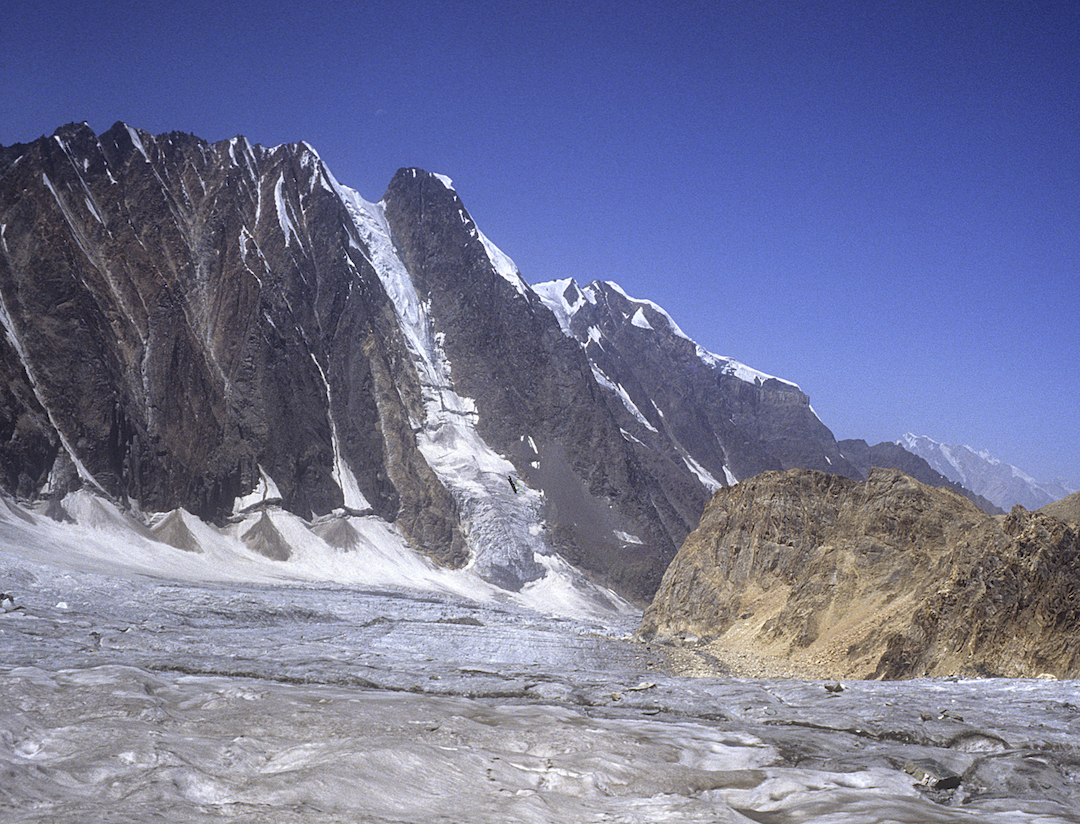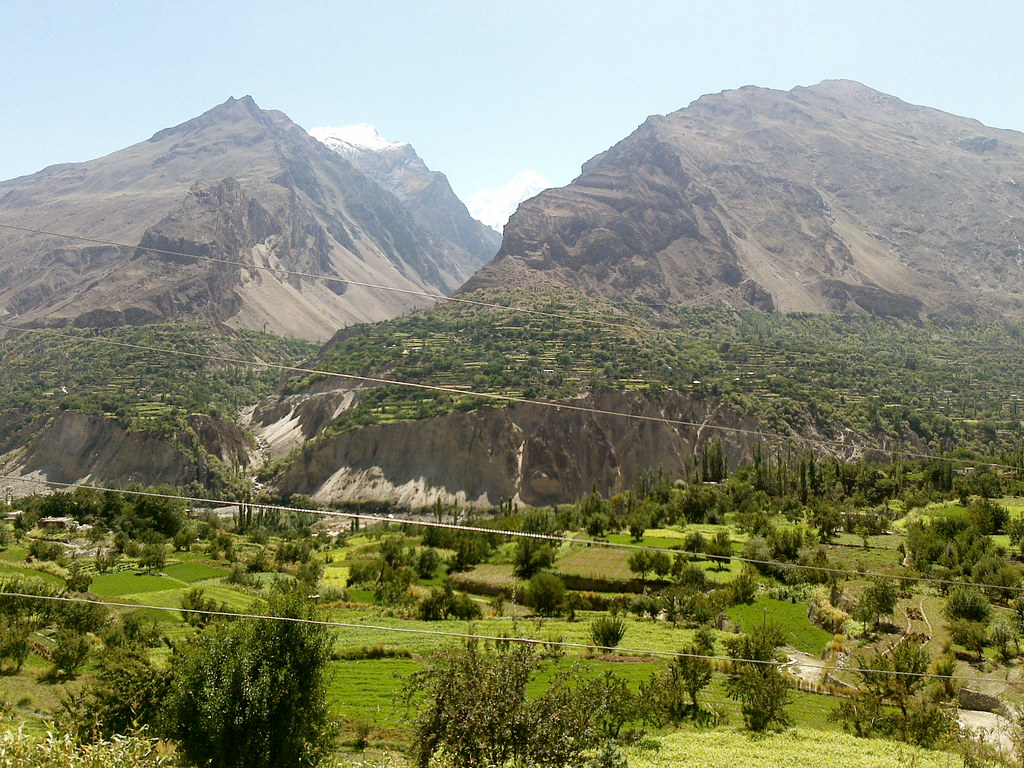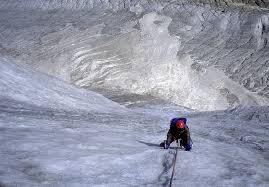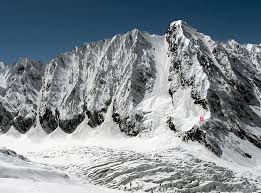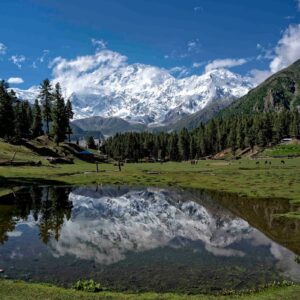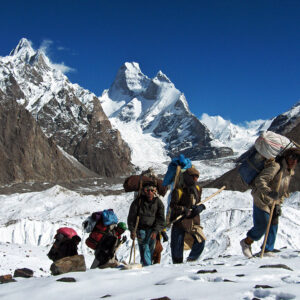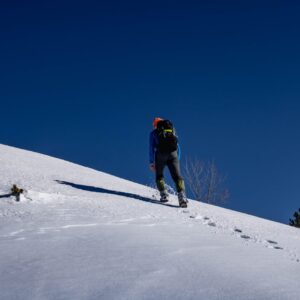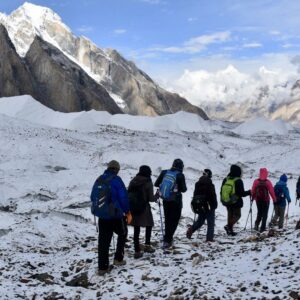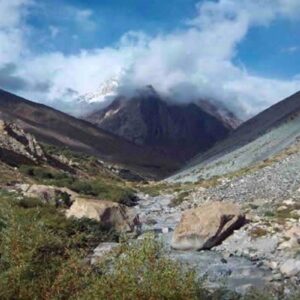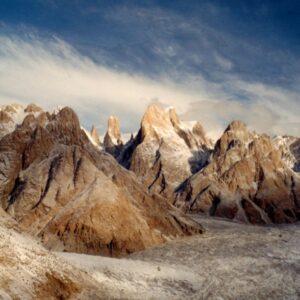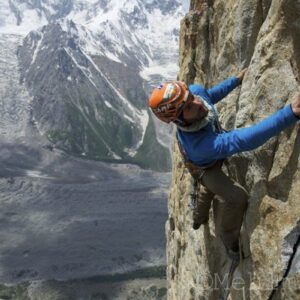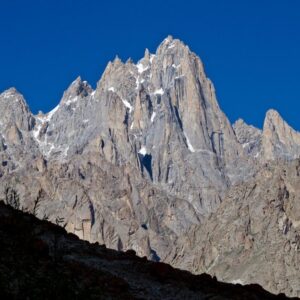Description
Welcome to the breathtaking landscapes of Sumayar Peak, nestled in the heart of Pakistan’s Karakoram Range. At Pak Tours & Travel, we invite you to embark on an unforgettable Trek to Sumayar Peak. Discover the rich cultural heritage, traditional hospitality, and awe-inspiring beauty of the Karakoram wilderness.
Sumayar Peak, standing at 5598 meters, is located in the Sumayar Valley near Rakaposhi in the Karakoram Range of Pakistan. This peak offers a challenging climb with stunning views of the surrounding mountains and glaciers. It is a less frequented peak, making it an ideal destination for climbers seeking solitude and adventure.
Highlights
- Sumayar Valley: A beautiful and less explored valley offering stunning landscapes and a peaceful environment.
- Sumayar Peak: A challenging climb with rewarding views of the Karakoram Range.
- Cultural Experience: Interact with the local community in Sumayar Village and learn about their traditions and way of life.
Safety Precautions
- Physical Preparation: Ensure you are in excellent physical condition. Regular cardiovascular and strength training exercises are crucial.
- Proper Gear and Equipment: Use high-quality climbing gear, including ropes, harnesses, carabiners, and ice axes. Double-check all equipment before the climb.
- Weather Awareness: Monitor weather conditions closely. Avoid climbing during bad weather, as it can increase the risk of avalanches and other hazards.
- Risk Management: Conduct a thorough risk assessment before the climb. Identify potential hazards such as loose rocks, unstable terrain, and crevasses.
- Health Precautions: Stay hydrated and consume high-energy foods. Carry a comprehensive first aid kit and know how to use it.
- Local Guides and Support: Hiring a local guide can enhance your experience and ensure safety.
Climbing Sumayar Peak (5598m) is a challenging endeavor that requires careful planning and execution. Here are some common mistakes climbers make and how to avoid them:
1. Inadequate Acclimatization
- Mistake: Rushing the ascent without proper acclimatization can lead to altitude sickness.
- Solution: Spend a few days at higher altitudes before the climb to allow your body to adjust. Follow a gradual ascent plan and include rest days.
2. Poor Physical Preparation
- Mistake: Underestimating the physical demands of the climb.
- Solution: Engage in regular cardiovascular and strength training exercises. Practice climbing techniques and ensure you are in peak physical condition before the expedition.
3. Improper Gear and Equipment
- Mistake: Using low-quality or inappropriate gear.
- Solution: Invest in high-quality climbing gear, including ropes, harnesses, crampons, ice axes, and insulated clothing. Double-check all equipment before the climb.
4. Ignoring Weather Conditions
- Mistake: Climbing during bad weather, can increase the risk of avalanches and other hazards.
- Solution: Monitor weather forecasts closely and be prepared to adjust your plans. Avoid climbing during adverse weather conditions.
5. Inadequate Hydration and Nutrition
- Mistake: Not drinking enough water or consuming sufficient calories.
- Solution: Stay hydrated and consume high-energy foods regularly. Carry enough water and snacks to sustain you throughout the climb.
6. Lack of Risk Management
- Mistake: Failing to conduct a thorough risk assessment.
- Solution: Identify potential hazards such as loose rocks, unstable terrain, and crevasses. Have a clear risk management plan and emergency procedures in place.
7. Overloading the Backpack
- Mistake: Carrying too much weight, which can slow you down and increase fatigue.
- Solution: Pack only essential items and distribute the weight evenly. Use lightweight, high-quality gear to minimize the load.
8. Inadequate First Aid Knowledge
- Mistake: Not being prepared to handle medical emergencies.
- Solution: Carry a comprehensive first aid kit and know how to use it. Take a basic first aid course and be familiar with treatments for altitude sickness, hypothermia, and injuries.
9. Ignoring Local Guides
- Mistake: Not hiring local guides who have extensive knowledge of the terrain.
- Solution: Hire experienced local guides to enhance your safety and overall experience. They can provide valuable insights and support during the climb.
10. Environmental Neglect
- Mistake: Leaving waste and not respecting the natural environment.
- Solution: Follow the Leave No Trace principles. Pack out all waste and avoid disturbing wildlife. Respect the natural beauty of the area.
By avoiding these common mistakes, you can increase your chances of a successful and safe climb on Sumayar Peak. If you have any more questions or need further assistance, feel free to ask!
Climbing Sumayar Peak (5598m) requires careful planning and adherence to safety precautions to ensure a successful and safe ascent. Here are some essential safety measures to consider:
1. Physical Preparation
- Fitness: Ensure you are in excellent physical condition. Regular cardiovascular and strength training exercises are crucial.
- Acclimatization: Spend a few days at high altitudes before attempting the climb to acclimatize and reduce the risk of altitude sickness.
2. Proper Gear and Equipment
- Climbing Gear: Use high-quality climbing gear, including ropes, harnesses, carabiners, and ice axes. Double-check all equipment before the climb.
- Clothing: Wear layered clothing suitable for extreme cold and changing weather conditions. Include thermal wear, waterproof jackets, and insulated gloves.
- Footwear: Invest in sturdy, insulated climbing boots with good ankle support.
- Helmet: Always wear a climbing helmet to protect against falling rocks and ice.
3. Weather Awareness
- Weather Forecasts: Monitor weather conditions closely. Avoid climbing during bad weather, as it can increase the risk of avalanches and other hazards.
- Temperature Fluctuations: Be prepared for sudden temperature changes and high winds.
4. Risk Management
- Hazard Identification: Conduct a thorough risk assessment before the climb. Identify potential hazards such as loose rocks, unstable terrain, and crevasses.
- Avalanche Awareness: Understand avalanche risks and how to assess snow conditions. Carry avalanche safety equipment, including beacons, probes, and shovels.
5. Climbing Techniques
- Proper Techniques: Use proper climbing techniques and ensure all team members are trained. Practice self-arrest techniques with an ice axe.
- Redundancy: Always back up critical gear and use multiple anchors at belay and rappel stations.
6. Health Precautions
- Hydration and Nutrition: Stay hydrated and consume high-energy foods. Dehydration can exacerbate altitude sickness.
- First Aid Kit: Carry a comprehensive first aid kit and know how to use it. Include medications for altitude sickness, pain relief, and wound care.
- Emergency Procedures: Have a clear plan for emergencies, including evacuation routes and communication with base camp.
7. Local Guides and Support
- Hire Local Guides: Experienced local guides can provide valuable knowledge about the terrain and weather conditions. They can also assist in emergencies.
- Communication: Maintain regular communication with your base camp or support team. Use satellite phones or radios if necessary.
8. Environmental Respect
- Leave No Trace: Follow the Leave No Trace principles to minimize your impact on the environment. Pack out all waste and avoid disturbing wildlife.
By following these safety precautions, you can enhance your chances of a successful and safe climb on Sumayar Peak. If you have any more questions or need further assistance, feel free to ask!
The Ultimate Trekking Adventure
The trek to Sumayar Peak offers an unparalleled adventure, taking you through some of the most stunning landscapes in Pakistan. From the lush green meadows of Hushe to the rugged terrain of Sumayar Peak, this trek provides a unique blend of excitement and natural beauty. Whether you’re an experienced trekker or a nature lover, the journey offers an experience like no other.
Why Choose Sumayar Peak Trek?
- Unique Trekking Routes: Experience the traditional way of life by trekking through the mountains. The diverse trails and scenic routes offer a peaceful and immersive experience.
- Rich Cultural Heritage: Explore the ancient forts, vibrant bazaars, and traditional villages. Learn about the fascinating history and culture of the Karakoram region.
- Breathtaking Landscapes: Witness the stunning beauty of the Karakoram Range, from the snow-capped peaks to the vast glaciers. The diverse landscapes offer a visual feast for the eyes.
- Adventure and Relaxation: The trek combines the excitement of mountain trekking with opportunities for relaxation and exploration. Enjoy camping under the starry sky, hiking through scenic trails, and soaking in the natural hot springs.
Our Trekking Packages
At Pak Tours & Travel, we offer a variety of trekking packages designed to suit different preferences and durations. Our experienced guides are dedicated to ensuring your safety and providing you with an unforgettable adventure. Here are some of our popular packages:
- Short Trek
- Ideal for weekend travelers
- Includes a day of trekking and a visit to nearby attractions
- Perfect for a quick mountain escape
- Extended Trek
- Perfect for those with more time
- Includes multiple days of trekking and cultural tours
- Explore the region in depth and experience the local culture
- Ultimate Adventure
- Designed for the adventurous
- Includes a comprehensive itinerary with trekking, camping, and cultural experiences
- A full immersion into the Karakoram wilderness
Safety First
Your safety is our top priority. Our guides are highly trained and certified professionals with extensive knowledge of the local terrain. We provide all necessary safety gear and ensure that all activities adhere to strict safety protocols. Additionally, our team conducts regular equipment checks and route assessments to guarantee a safe and enjoyable experience for all participants.
Plan Your Adventure
Embark on a trek to Sumayar Peak with Pak Tours & Travel. Our team is here to assist you with every aspect of your trip, from planning and logistics to guiding you through the adventure. Whether you’re traveling solo, with friends, or as part of a group, we ensure a seamless and memorable journey.
Contact Us
Ready to explore the majestic Sumayar Peak trek? Contact Pak Tours & Travel today to book your trek. Our friendly and knowledgeable staff are available to answer any questions and help you create the perfect adventure. Reach out to us via phone, email, or visit our website for more information.
Itinerary
Morning: Fly from Islamabad to Gilgit (approximately 1 hour). Afternoon: Arrive in Gilgit and check into your hotel. Evening: Explore Gilgit town and prepare for the journey ahead.
Morning: Drive from Gilgit to Sumayar Village (approximately 4-5 hours). Afternoon: Arrive in Sumayar Village and set up camp. Evening: Acclimatize and explore the village.
Morning: Begin the trek to the base camp (approximately 6-7 hours). Afternoon: Arrive at the base camp and set up tents. Evening: Rest and acclimatize at the base camp.
All Day: Spend the day acclimatizing and exploring the surrounding area. Short hikes to higher altitudes and back to base camp.
Morning: Trek to the high camp (approximately 5-6 hours). Afternoon: Arrive at the high camp and set up tents. Evening: Rest and prepare for the summit push.
Early Morning: Start the ascent to the summit of Sumayar Peak. Afternoon: Reach the summit and enjoy the breathtaking views. Evening: Descend back to the high camp for an overnight stay.
Morning: Descend from the high camp to the base camp (approximately 4-5 hours). Afternoon: Arrive at the base camp and rest. Evening: Celebrate the successful climb.
Morning: Trek back to Sumayar Village (approximately 5-6 hours). Afternoon: Arrive in Sumayar Village and prepare for departure. Evening: Overnight stay in the village.
Morning: Drive back to Gilgit (approximately 4-5 hours). Afternoon: Arrive in Gilgit and check into your hotel. Evening: Relax and explore Gilgit.
Morning: Fly back to Islamabad. Afternoon: Arrive in Islamabad and end of the tour.
Location
Faq
The best time to climb Sumayar Peak is during the summer months, from June to September, when the weather is most stable and the conditions are favorable for climbing.
The climb to Sumayar Peak is considered challenging and is suitable for experienced climbers. It involves technical climbing skills and the ability to navigate through glaciers and high-altitude terrain.
Yes, you need a permit to climb Sumayar Peak. The permit can be obtained through the local authorities in Pakistan, and it is usually arranged by the tour operator or expedition organizer.
Essential gear includes climbing boots, crampons, ice axes, harnesses, ropes, helmets, and appropriate clothing for extreme cold. A detailed gear list will be provided by your expedition organizer.
Physical preparation should include cardiovascular training, strength training, and endurance exercises. It’s also important to practice climbing techniques and acclimatize to high altitudes before the expedition.
Risks include altitude sickness, avalanches, crevasses, and extreme weather conditions. Proper acclimatization, risk assessment, and having a well-prepared emergency plan are crucial.
Yes, hiring local guides is highly recommended. They have extensive knowledge of the terrain and can provide valuable assistance and support during the climb.
The typical itinerary includes traveling from Islamabad to Gilgit, then to Sumayar Village, followed by several days of trekking to reach the base camp. The climb itself takes a few days, with time allocated for acclimatization and rest.
To handle altitude sickness, ascend gradually, stay hydrated, and avoid strenuous activities initially. Medications like Diamox can help, but consult your doctor before the trip. If symptoms persist, descend to a lower altitude immediately.
Accommodation during the expedition includes camping in tents at various base camps and high camps. In towns like Gilgit, you will stay in hotels.
